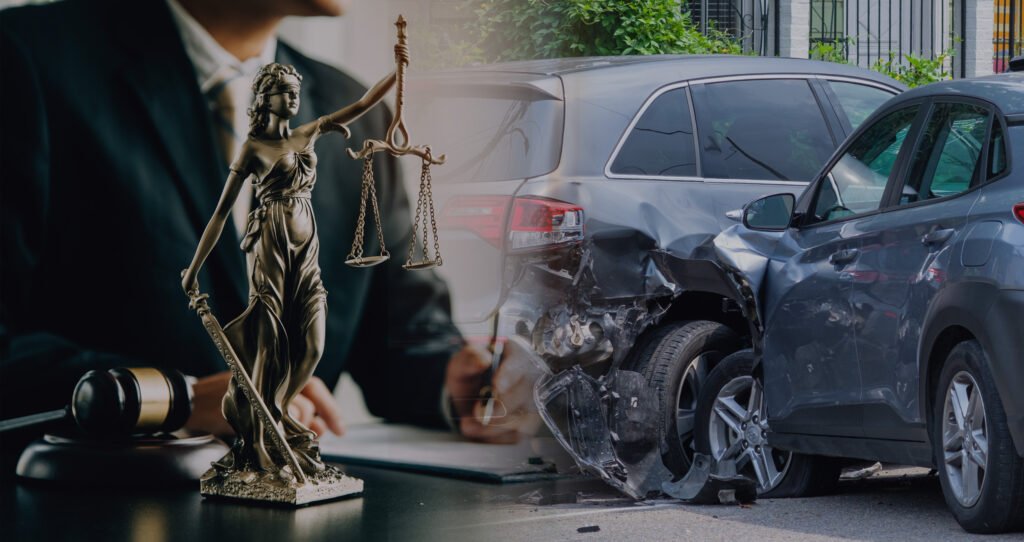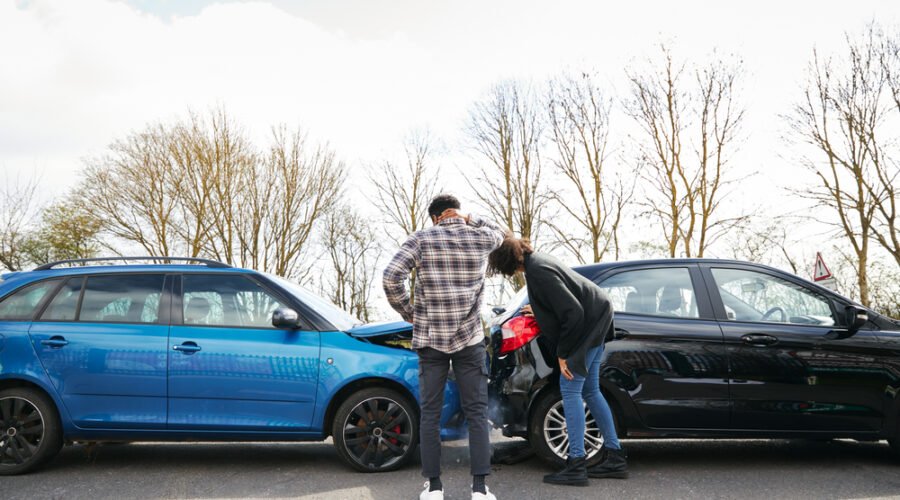The Other Driver Won’t Admit Fault. What’s Your First Move?
- By Car Accident Lawyer Tacoma WA
- accident scene checklist car accident evidence car accident photos documenting an accident insurance claim photos personal injury lawyer smartphone evidence tacoma accident what to do after accident what to photograph after accident
- With 0 comments
Table of Contents
ToggleThe Other Driver Won’t Admit Fault. What’s Your First Move?
The jarring impact, and then, for a moment, everything stops. Thankfully, you don’t feel seriously injured. The other driver clearly made a mistake—maybe they swerved into your lane or ran a stop sign. You naturally expect them to get out of their car, apologize, and deal with the situation. But when the other driver approaches your window, they begin to tell a completely different story. “Why did you stop so suddenly?” “You were speeding.” “I think this was your fault.” In that instant, your mind goes blank. A wave of anger and disbelief washes over you. When the other party denies the obvious facts or tries to shift the blame, the accident scene quickly devolves from a moment of crisis into a confusing dispute. Many people react emotionally at this point, starting an argument that only makes things worse. Remember this: fault in a car accident is not a game won by the loudest voice. It is a cold process determined by evidence and facts. When the other driver refuses to admit fault, the calm, methodical first steps you take can completely change the outcome of your case.1. Stay Calm and Silent: Your First and Most Powerful Move
When the other party begins making baseless claims, your first mission is to not get drawn into a debate. This isn’t an admission of defeat; it’s the smartest strategy to protect yourself.- Do Not Argue: A roadside argument will solve nothing. It can escalate emotions and potentially lead to threats or violence. Furthermore, words spoken in anger can be used against you later.
- Maintain Your Silence: You have no obligation to rebut every claim the other driver makes. It’s best to say something like, “The police can sort this out when they arrive,” or simply say nothing at all. Silence is your shield against making a statement that could hurt you. As we’ve stressed before, never say “I’m sorry” or admit even a small amount of fault.
2. Become an Evidence Collector: Building Your Case in Real-Time
The only thing that can counter a false ‘story’ is cold, hard ‘facts.’ From this moment on, you are a detective, methodically gathering objective evidence. Your smartphone is your most powerful tool.- 2.1. Call 911 and Get a Police Report: Even if the other driver’s fault seems obvious, you must call 911, especially if they are denying responsibility. The responding officer will document the scene, listen to both sides, and file an official report. If a clear traffic violation occurred, they might issue a citation. This police report becomes a critical official document for determining fault.
- 2.2. The Power of Your Smartphone: Take Photos and Videos from Every Angle: Memories can be flawed, but photos don’t lie. Use the following checklist to capture as much as you can:
- Vehicle Damage: Take close-up and wide shots of the damage to both cars from multiple angles.
- The Overall Scene: Document the final positions of the cars, any skid marks on the road, debris, and the general layout of the accident.
- Surrounding Environment: Photograph traffic signals, stop signs, lane markings, speed limit signs, and any other relevant traffic controls. Weather and road conditions are also important evidence.
- 2.3. Witnesses are Golden: If there are people nearby who saw the accident, politely approach them for help. Ask, “Excuse me, did you see what happened? Would you be willing to give me your contact information?” Their neutral, third-party statement can add immense credibility to your claim.
- 2.4. Dashcam and Surveillance Footage: If you have a dashcam, you have secured the most definitive evidence. Also, take a quick look around for nearby businesses, banks, or traffic cameras that may have recorded the incident. You can request the footage later.
3. Understanding “Fault” in Washington State: It’s Not Always All-or-Nothing
Another reason a driver might not admit fault is to try to shift some of the blame onto you, thereby reducing their own liability. This is where it’s important to understand Washington State’s “Comparative Fault” law. Washington is a “pure comparative fault” state. This means that even if you are found to be 10% at fault for an accident, you can still recover 90% of your damages. For example, if your total damages are $100,000 and you are found to be 20% at fault, you would be entitled to $80,000 in compensation. This is precisely why insurance companies will work hard to find any small mistake on your part—like signaling a turn a moment too late—to increase your percentage of fault. The objective evidence you gather is crucial for fighting back against these unfair claims.4. Navigating the Insurance Minefield
You must be extremely cautious when communicating not only with the other driver but also with their insurance adjuster. Their sole objective is to minimize their company’s payout.- Report Only the Facts to Your Own Insurer: After the accident, report the facts to your own insurance company without speculation or emotional language.
- Do Not Agree to a Recorded Statement for Their Insurer: They will sound friendly and helpful, but do not agree to provide a recorded statement before speaking with an attorney. You have no idea how your words might be edited or interpreted to be used against you.
Featured Tacoma Car Accident Lawyers
Car Crash Washington Tacoma Car Accident LawyerRecommended Tacoma Car Accident Information Sites
Knowing the correct information and official procedures after a car accident is critically important. The list below contains useful resources from credible government agencies for Washington State and the Tacoma area.Accident Reports & Relevant Laws
- Washington State Patrol (WSP) – Request a Collision Report
- This is the official portal to request and receive official reports for traffic collisions handled by the Washington State Patrol. This document is essential for insurance claims and legal proceedings.
- Link:
https://www.wsp.wa.gov/driver/collision-reports/
- Revised Code of Washington (RCW) – Rules of the Road
- Here you can view the official text of Washington State’s traffic laws (Title 46 RCW). This includes rules on right-of-way, speed limits, and other regulations that serve as the legal basis for determining fault.
- Link:
https://app.leg.wa.gov/rcw/default.aspx?cite=46.61
- Tacoma Municipal Code – Traffic Regulations
- Description: For accidents that occur on city streets within Tacoma, the city’s specific traffic ordinances may apply. You can look up local regulations here.
- Link:
https://www.cityoftacoma.org/government/city_council/municipal_code(Search for ‘Title 11 – Vehicles and Traffic’ on the page)
Insurance, Licensing, and Vehicle Information
- Washington State Office of the Insurance Commissioner (OIC)
- This is the official source for the most accurate information on Washington’s minimum auto insurance requirements and consumer rights in case of a dispute with an insurance company.
- Link:
https://www.insurance.wa.gov/
- Washington State Department of Licensing (DOL)
- The official site to handle driver and vehicle-related administrative tasks, including filing an accident report, checking your driver’s license status, and accessing vehicle registration information.
- Link:
https://www.dol.wa.gov/
Real-Time Traffic & Safety Information
- Washington State Department of Transportation (WSDOT) – Tacoma Area Traffic
- This site provides real-time traffic conditions, road closures, construction updates, and live traffic camera feeds for the Tacoma area, which is useful for understanding road conditions.
- Link:
https://wsdot.com/travel/real-time/map/?region=tacoma
- Washington Traffic Safety Commission (WTSC)
- Description: Offers in-depth information on traffic safety, including accident statistics, data, and safety campaigns in Washington State, helping to raise awareness and prevent future accidents.
- Link:
https://wtsc.wa.gov/
Google Search
- Live Google Search Results
- See the real-time Google search results for “Tacoma car accident lawyer.” Explore the wide range of information available on the web.
- Link:
https://www.google.com/search?q=Tacoma+car+accident+lawyer


We hope that through this article, you have a better understanding of your situation after a car accident and feel that you are not alone. The most important part of your recovery is protecting your rights with the right information.
If you need to connect with an expert who will listen to your story and fight on your side, find the best car accident lawyers in Tacoma through a free consultation at the Car Accident Lawyer Directory Tacoma.
Information
Find a Lawyer
Tacoma Car Accident Lawyers
Ask A Lawyer
Google Search Result
Washington State Traffic Accident Information

